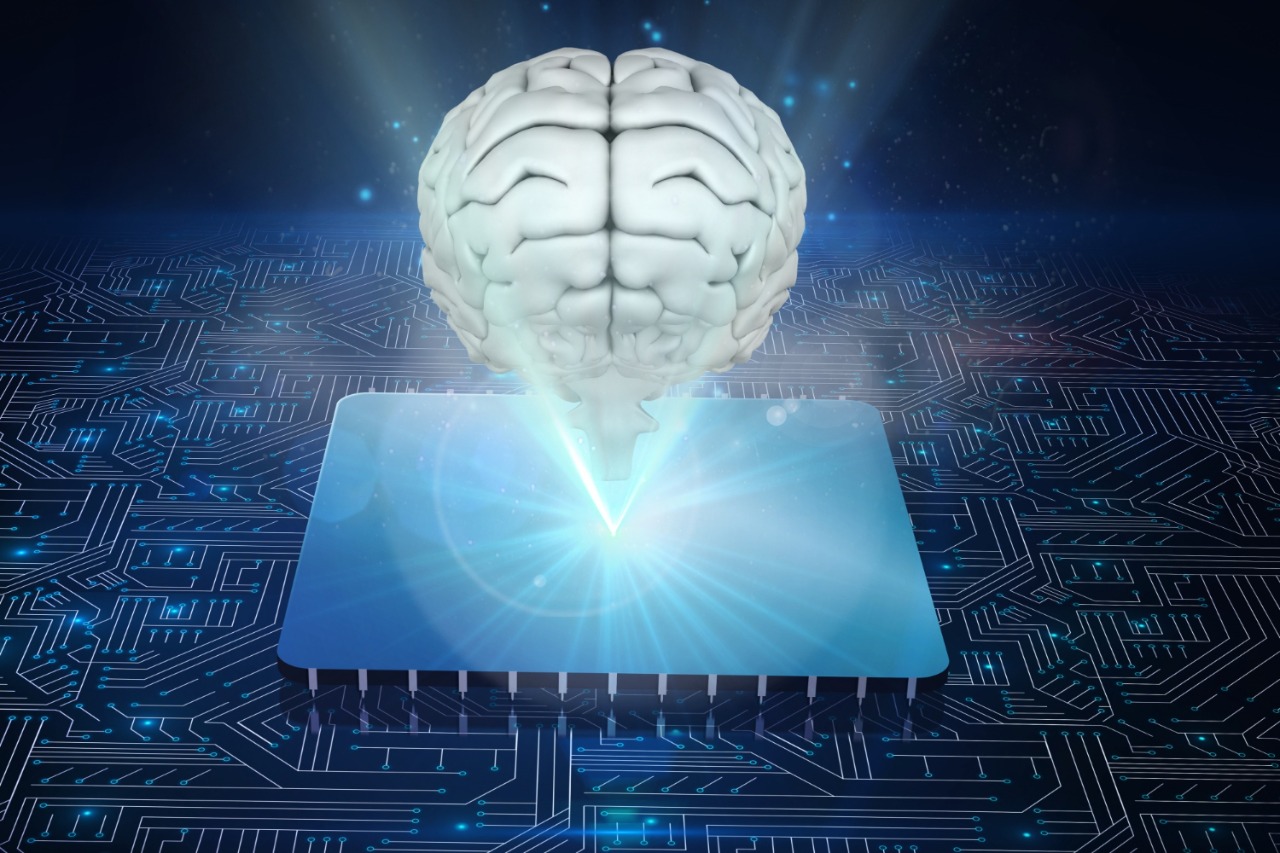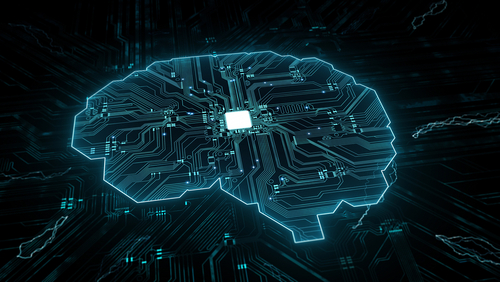IMC, also known as in-memory computing, is increasingly being used. This can be ascribed to the rising demand for quicker big data processing and analytics, the requirement for architecture simplification as the number of different data sources rises, and technological advancements that are reducing TCO.
The fast data revolution that is about to sweep the in-memory computing sector will fundamentally alter how people live their lives. Data processing can now be done at a size and speed that have never been feasible before, and at costs that are well within reach, thanks to middleware software that enables data to be stored in RAM across a cluster of computers and processed in parallel. Resistive random-access memory (ReRAM) may hold the key to enabling in-memory computing and artificial intelligence (AI) to better emulate the human brain, but there are still many obstacles to overcome.
A new era of artificial intelligence is unquestionably beginning, despite the fact that AI has been discussed for years. This is because to advances in computing, deep learning, and in-memory computing. Nearly every industry, including healthcare, automotive, manufacturing, industrial inspections, and retail, has the potential to be positively affected and transformed when deep learning, a subset of AI and machine learning, is combined with AI. Humans and machines can bridge the gap between automation and augmentation by giving workers the ability to collect data, run analytics, and perform predictive maintenance.
What Is In-memory Computing?
The process of performing computer calculations entirely within computer memory is known as in-memory computation (or in-memory computing) (e.g., in RAM). This phrase often refers to extensive, complex calculations that must be performed on a cluster of computers using specialist systems software. As a cluster, the computers pool their RAM so that the calculation is essentially performed over multiple computers and makes use of the combined RAM of all the computers.
It provides real-time insights that allow firms to respond quickly by keeping data in RAM and processing it in parallel. It is therefore perfect for use in point-of-decision HTAP and transactional analytics driven by real-time analytics in transactional and analytical applications sharing the same data infrastructure.
With in-memory computing, everything may be placed in an in-memory data grid and spread throughout a horizontally scalable architecture as opposed to the traditional computer paradigm of transporting data to a different database, processing it, and then saving it back to the data store. Because the disc I/O that delays workloads and mixed heterogeneous workloads from occurring in real time has been removed, this is performed with minimal latency.
How Does In-memory Computing Work?
In order for in-memory computation to function, all sluggish data accesses must be avoided and RAM-only data must be used instead. By eliminating the typical latency experienced while accessing hard disc drives or SSDs, overall computing performance is significantly increased. In the case of several computers, the software breaks the computation into smaller jobs and distributes them to each computer to run in parallel. Software running on one or more computers maintains the computation as well as the data in memory. In-memory data grids are a type of technology that frequently do in-memory computation (IMDG). Hazelcast IMDG is one such example, allowing users to do intricate calculations on big data sets over a cluster of hardware servers while retaining blazingly fast performance.
Prior ReRAM and In-memory Computing Limitations
However, there are a number of significant problems with ReRAM devices. For starters:
- high-precision analog-to-digital converter-based readout circuits are extremely difficult to implement,
- device non-idealities such cell-cell fluctuations can have a negative impact on performance.
- The nonlinear and asymmetric conductance update seen in ReRAM devices, is a third issue that can seriously impair training accuracy.
Today’s in-memory technology’s scalability is equally as crucial as its speed. It is obvious that putting stuff in RAM makes accessing it considerably faster. But it’s also crucial to disperse computing, which means using a sizable cluster of inexpensive gear and distributing both the data and the processing effort. The transportation of the data is minimized by sending the calculate to the data. The scale required for both today’s and tomorrow’s applications may be provided by the distributed computing capabilities of current in-memory technologies.
Another crucial aspect of modern in-memory technologies is availability. Using this technology, mission-critical applications that require quick decision-making and massive customer service volumes can run more quickly. Due to the resulting requirement for high availability, technology is eliminating the distinction between memory and storage.
In-memory Computing and AI
Big data and quick infrastructure work together to create the ideal environment for the rise of AI. Now that we’ve here, AI is permeating almost every aspect of our daily lives. All of this technology, including digital assistants, autonomous vehicles, smart objects, and sensor networks, continuously produces data at volumes that are far more than what humans are able to analyze, but are well within the capabilities of AI and machine learning. AI is entering its productive era as a result of in-memory computing’s growing popularity.
Performance is needed on a fundamentally different scale for applications that produce large amounts of streaming data; AI/ML systems routinely do millions of complicated operations per second and greatly value the speed that in-memory technology provides. Due to these volume requirements, it is possible for processing distance to the application to reduce reaction times to less than one microsecond. However, using a database that was designed for durability rather than speed incurs additional delays. The idea of millions of transactions per second becomes practical when the requirement for data immediateness can migrate from network/disc into RAM.
Additionally, it creates potential for operations, whereby the speed and effectiveness of the company can be permanently improved. A glaring case would be the integration of multiple data sources into RAM to assist a shared goal; combining customer information such as purchase and customer support history, shipping and taxation requirements, with recommendation engines or collaborative filtering systems means that any interaction with a customer has a much higher probability of success because the system is working off more complete information. With complete access to all client data, an AI-based chatbot can easily handle millions of calls per minute, far beyond the capacity of even the biggest call centers.
AI and Big Data’s Exponential Growth
Data is growing quickly and steadily everywhere, from our personal gadgets to large-scale institutions. The industry must find new, creative ways to analyse the ever-increasing flow of information as the amount of data expands at stratospheric rates; here is where AI comes into play.
The new era of big data is being ushered in by AI. AI can enable the automation of procedures that will enhance corporate outcomes by collecting, evaluating, and utilizing insightful data. In order to fulfil the demands of high-bandwidth AI, processing and memory innovation becomes crucial for making this a reality.
Role of In-memory Computing In Advancing AI
When it comes to processing AI technologies more quickly and accurately, enhanced memory and processing power play key roles. A study that was presented at the International Conference on Computer Vision (ICCV) in 2017 showed that deep learning performance can be considerably improved just by boosting a system’s raw memory amount.
High-bandwidth memory (HBM) solutions from Samsung were developed in response to the realization of the need for improved memory capabilities and can handle the continuously changing requirements of deep learning and AI. Samsung, the market leader in cutting-edge memory solutions, has unveiled several important items to develop AI, including high-performance deep learning processors and HBM2, the first next-generation memory product presently being produced in large quantities. Samsung is able to deliver HBM2 memory in large quantities while fulfilling the constantly changing and expanding demands for processing power and speed brought on by AI and deep learning because to its extensive R&D efforts and global reach.
Real World Blessings of AI and In-memory Computation
It is obvious that many will need a quick data infrastructure built around in-memory computing when considering the technical and societal changes anticipated over the next few decades.
Here are some of the adjustments that are either now occurring or are about to:
Smart Houses
With AI and In-memory computing, users are beginning to connect these home components onto the cloud as we utilize automated locks, lighting controls, thermostats, and other components more frequently. All of our homes will soon be linked to smart cities.
Megacities:
70% of the world’s population will reside in very large cities in 30 years. To automate their operations, these megacities will require quick, massively scalable computing.
Self Driving Cars
Soon, we’ll see individuals in their Teslas cruising down the interstate while reading a newspaper from behind the wheel. For the sake of the driver’s safety and the safety of others around them, thousands of data points are created from onboard sensors each second (known as edge processing). At 80 mph, there is little space for error, and AI ensures that errors are kept to a minimum.
Delivery Robots
The campus of UC Berkeley is currently served by cooler-sized robot pizza delivery services. They manage to arrive to the desired location before supper gets chilly by navigating a challenging area that is crowded with people and bikers. At the same time, AI successfully controls each of them.
Drones
A kidney was delivered by drone to a transplant patient in a Maryland hospital. Although it has only occurred once (so far), it was successful, and its implications are substantial. Although this is more difficult than simply delivering pizza, AI allows for the real-time measurement of a wide range of parameters, including temperature, humidity, ETA, and other factors. There is also less chance of delays due to lack of traffic compared to, example, an ambulance.
Future of In-memory Processors and AI
As in-memory computing and parallel processing have made tremendous strides, they now adequately support advanced deep learning, ushering in the next phase of AI development. By offering high-bandwidth memory interfaces and high-capacity, high-performance DRAM solutions for the server side, Samsung Semiconductor is at the forefront of this digital transition. The future of deep learning, computer vision, natural language processing, and other applications that have the potential to change the way we live are accelerated by these improved technologies, which enable advanced data processing and analysis. This provides globally applicable machine intelligence.
In-memory computing is the answer to reducing the data bottleneck in deep learning stacks as we deploy bandwidth-demanding AI and deep learning technologies. The server industry is changing as a result of in-memory technology since it significantly speeds up data indexing and transaction processing. In order to further AI innovation and continue to transform enterprises around the world, Samsung has released a number of high-capacity and high-performance DRAMs, including 3DS DRAM modules, GDDR6, HBM2, and SSD servers.

